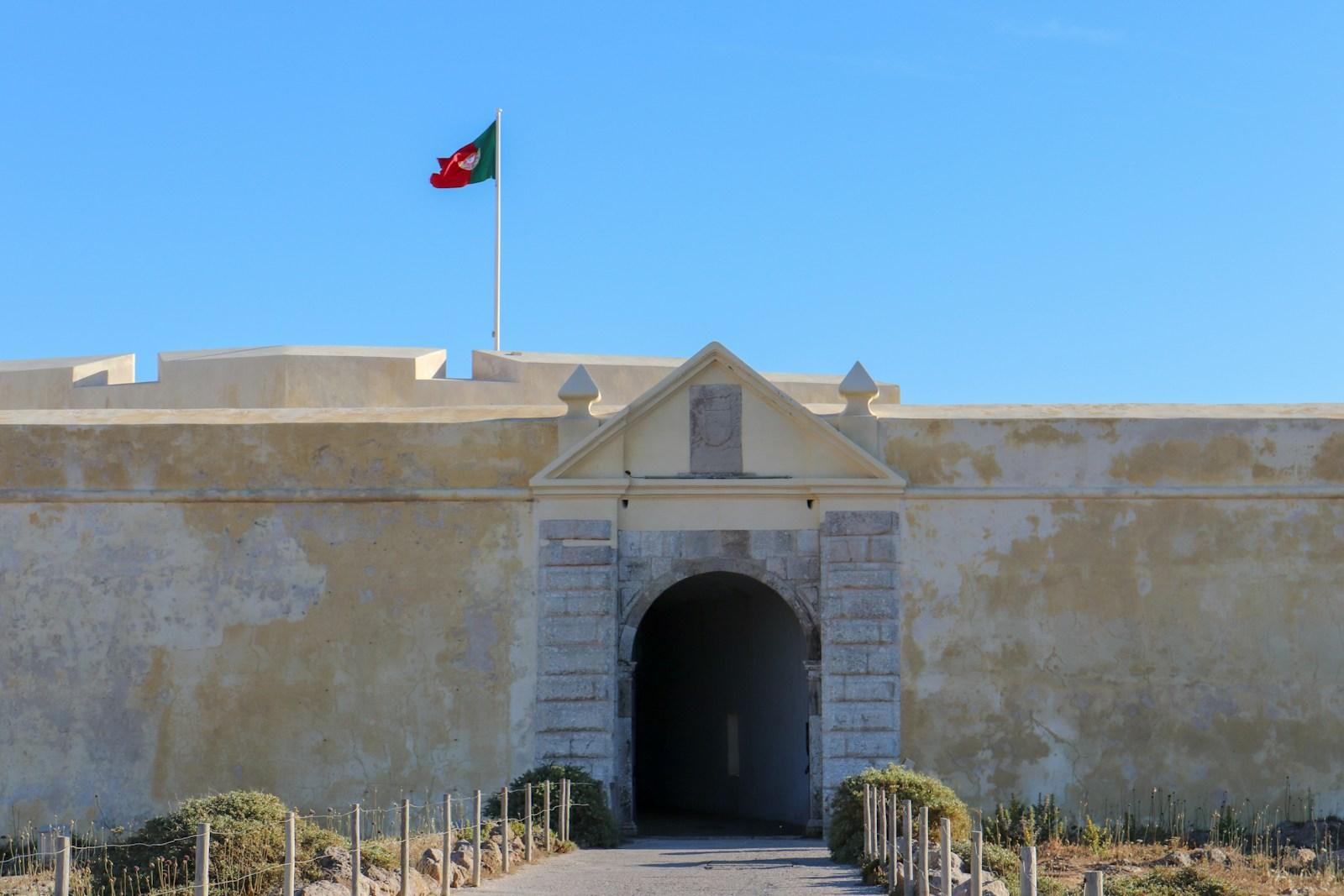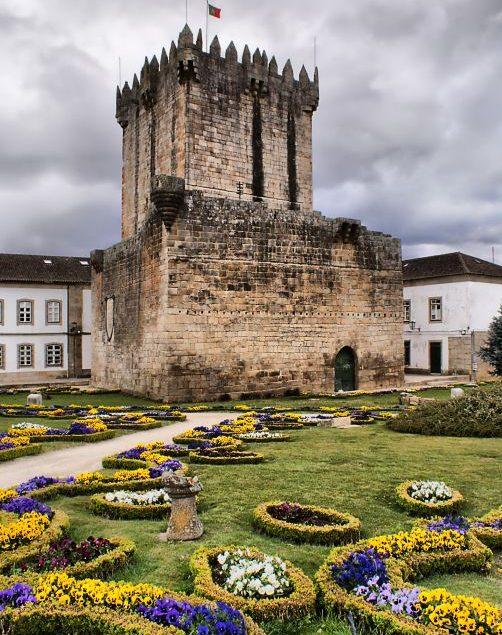“From above, the fort looks less like a ruin and more like a giant compass rose carved into the earth.”
Arrival on the Border
The first glimpse of Forte de La Lippe doesn’t come from a signpost or a guidebook. It comes from the horizon. As we drove through the rolling plains of the Alentejo toward Elvas, the landscape spread wide and empty, dotted with olive groves and cork oaks. Then, rising above the folds of the land, a star appeared—not celestial, but man-made.
We pulled over, stepped out of the car, and just stood there. The 18th-century star fort, commissioned by King José I and designed by the Prussian Count Wilhelm of Schaumburg-Lippe, is no ordinary stronghold. It’s geometry on a monumental scale, a fortress drawn with the precision of a mathematician and the imagination of an artist.
A Fort Born of Fear
“La Lippe is a fortress built not for vanity but for survival.”
To understand La Lippe, you need to step back into the mid-1700s. Portugal was reeling from the 1755 Lisbon earthquake and facing renewed threats from Spain. Enter Schaumburg-Lippe, a military genius brought in to modernise Portugal’s defences.
Instead of walls that simply withstood siege, La Lippe was designed to prevent one altogether. Its bastions and ravelins, laid out in a star shape, could fire across each other, leaving no blind spots. From the sky, the fort resembles a celestial diagram; from the ground, it feels like a labyrinth of earth, stone, and gunpowder logic.
Walking the Walls
We entered through the main gate, flanked by thick defensive walls that seemed almost alive, pulsing with centuries of vigilance. Inside, the silence was startling. The parade grounds stretched out before us, now empty save for the crunch of our footsteps.
The walls still carry the weight of muskets and cannons. The powder magazine, cool and cavernous, reminded us that this place was once a heartbeat away from battle. Climbing the ramparts, we gazed out toward Spain. The Guadiana River glimmered in the distance, and for a moment, we could imagine soldiers standing here, scanning the horizon for movement.
“On these walls, the line between Portugal and Spain feels less like a border and more like a question.”
A Star Seen from Above
The true genius of La Lippe reveals itself from the sky. Though we couldn’t hire a drone on the day, we had seen aerial photos before arriving. From above, the fort is breathtaking—its points radiating outward like the rays of a sun, surrounded by layers of moats, glacis, and earthen ramparts.
Walking inside those shapes, however, you don’t think of beauty. You think of endurance. The star design is elegant, but it is also brutal: every angle, every trench, calculated to kill or to protect.
Elvas: The Fortress City
Visiting La Lippe is not a stand-alone experience. It’s part of Elvas, the great garrison town whose ring of forts earned it a UNESCO World Heritage listing. Alongside La Lippe, the Forte de Santa Luzia and the Aqueduto da Amoreira complete the story of a city built to withstand.
We stayed the night in Elvas, wandering its narrow streets, eating migas alentejanas and grilled black pork, and listening to the evening bells. From a rooftop terrace, we could see the outline of La Lippe silhouetted against the fading sky.
“In Elvas, history doesn’t sit in museums—it surrounds you, stone by stone.”
Why Visit Today
So why should modern travellers seek out an 18th-century star fort?
Because places like La Lippe remind us that history isn’t abstract. It’s physical. It’s geometric. It’s standing in the sun on a border fort and feeling the hum of centuries beneath your feet.
For us, the visit was less about ticking off a monument and more about pausing in the middle of a journey. Here, on the frontier, we felt the stretch of Portugal’s history—the fragility of borders, the brilliance of design, and the endurance of a country that has always lived with one eye on its neighbours.
Practical Notes
-
Where: Forte de Nossa Senhora da Graça, better known as La Lippe, sits just outside Elvas in the Alentejo.
-
How to Get There: Elvas is about two hours east of Lisbon by car. Buses run from Lisbon to Elvas, but a car gives you freedom to explore the forts scattered across the landscape.
-
When to Visit: Early morning or late afternoon for the best light on the walls—and cooler air if you’re visiting in summer.
-
Combine With: A visit to the town of Elvas itself, the Aqueduct of Amoreira, and a meal in one of the local taverns.
Closing Reflection
“La Lippe is proof that even fear can create beauty.”
We left the fort as the sun began to drop, casting long shadows across its star-shaped ramparts. The geometry softened into light and shade, and the fort seemed less a war machine than a reminder. Borders change, wars pass, but the stones endure.
As we drove away, we looked back one last time. From the road, the star was still visible, etched against the horizon. And we knew we’d never forget it.
 What to Do and See
What to Do and See
At La Lippe (Forte de Nossa Senhora da Graça)
Walk the Ramparts
Climb to the top and trace the angular star points. From here, the views sweep across the Guadiana Valley all the way to Spain.
Explore the Bastions and Tunnels
Wander through the inner works—powder magazines, underground passages, and defensive bastions that once housed troops and cannons.
Stand in the Parade Ground
The wide central square feels eerily empty now, but you can still sense the drills and discipline that once filled it.
Look for Geometric Perfection
The fort’s star shape is best appreciated from above (drone, photo books, or local postcards), but on foot you can still admire the layered precision of its glacis and ditches.
Around Elvas
-
Forte de Santa Luzia
Another star fort from the 17th century, smaller but equally rich in atmosphere. Together with La Lippe, it forms part of Elvas’s UNESCO defences. -
Aqueduto da Amoreira
A massive 16th-century aqueduct stretching nearly 7 km with four tiers of arches. Walk under it at sunset when the stone glows golden. -
Museu Militar de Elvas
Located in the old barracks, this military museum puts the city’s defensive role into context with weapons, uniforms, and wartime memorabilia. -
Elvas Old Town
Lose yourself in narrow lanes, whitewashed houses trimmed with yellow paint, and little cafés serving migas alentejanas and sericaia (a cinnamon-topped local dessert). -
Castelo de Elvas
Climb the medieval castle towers for panoramic views of the surrounding plains—and to see how earlier fortifications paved the way for La Lippe’s star design.
“Elvas isn’t just about one fort—it’s a whole landscape of defence, carved in stone across centuries.”




 What to Do and See
What to Do and See

